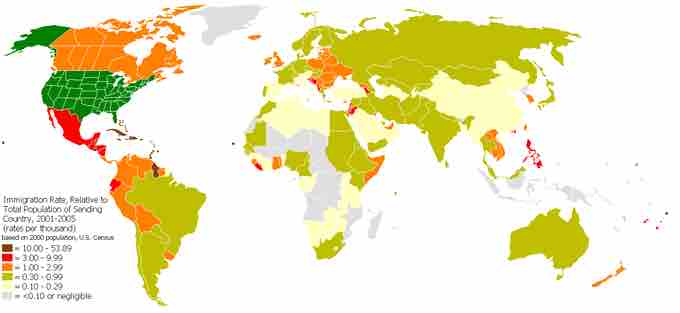Immigration and border security are two important issues for U.S. policy.
Though immigration to the United States has been a major source of economic growth and cultural change throughout American history, the recent discourse surrounding immigration deals mostly with illegal immigration. Illegal immigrants are those non-citizens who enter the United States without government permission and are in violation of United States nationality law or stay beyond the termination date of a visa, also in violation of the law.
The illegal immigrant population in the United States in 2008 was estimated by the Center for Immigration Studies to be about 11 million people, down from 12.5 million people in 2007. Other estimates range from 7 to 20 million. According to a Pew Hispanic Center report, in 2005, 56% of illegal immigrants were from Mexico; 22% were from other Latin American countries, primarily from Central America; 13% were from Asia; 6% were from Europe and Canada; and 3% were from Africa and the rest of the world.

Immigration to the U.S.
Rate of immigration to the United States relative to sending countries' population size, 2001–2005
Illegal immigrants who come generally for economic opportunities or to escape political oppression, continue to outpace the number of legal immigrants - a trend that has held steady since the 1990s. While the majority of illegal immigrants continue to concentrate in places with existing large Hispanic communities, an increasing number of them are settling throughout the rest of the country.
The challenge of illegal immigration is closely linked with that of border security, the concept of which is related to the persistent threat of terrorism. Border security includes the protection of land borders, ports, and airports and after the September 11, 2001 terrorist attacks, many questioned whether the threat posed by the largely unchecked 3,017 mile Canadian border, the 1,933 mile Mexican border, and the many unsecured ports.